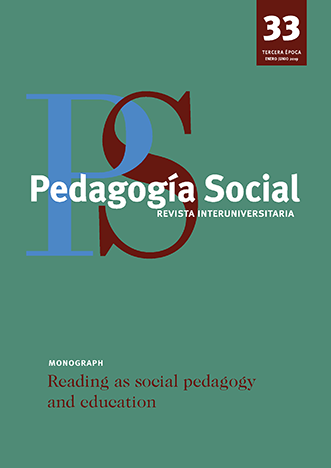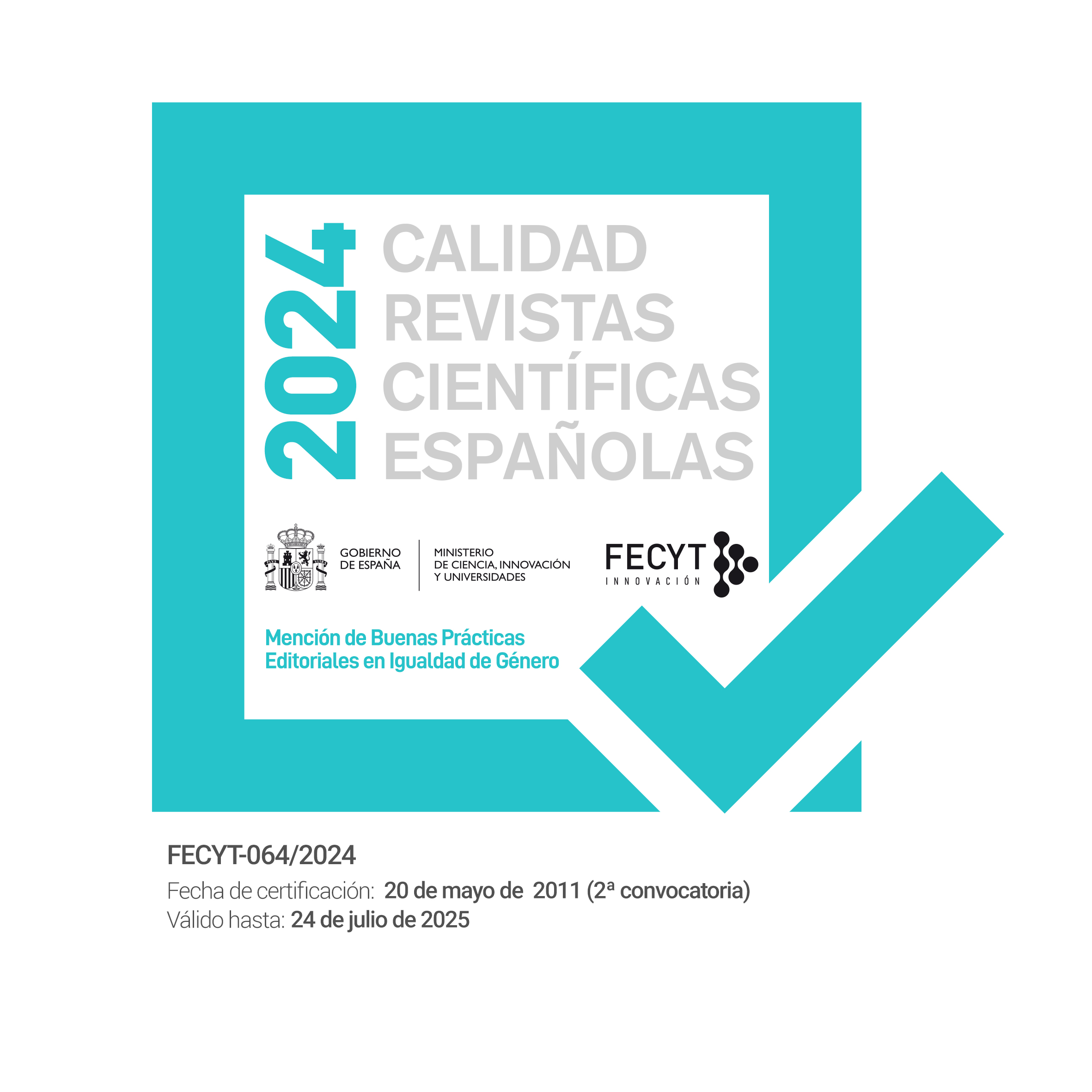QIIP - Questionnaire of interests for intergenerational practice
DOI:
https://doi.org/10.7179/PSRI_2019.33.07Keywords:
Interests, intergenerational practice, Intergenerational education, Ageing, QIIPAbstract
This article presents the validation study of the Questionnaire of interests for intergenerational practice (QIIP), which aims to contribute to the study of interests on a population level as well as supporting the development and implementation of intergenerational activities and programs through its identification. The design of the study is correlational and cross-generational. The QIIP was applied to 385 residents of Oporto, divided into three age groups. The instrument showed to be valid and revealed good internal consistency concerning the identification of the interests of the sample studied and can be analyzed either by dimension of interest, or by activity item of interest, depending on the goals of intergenerational practices that need to be developed. Upon analysis by dimension and age group, it was found that the Dimension Caring/Protecting and the Dimension Culture refer to common interests, shared among the three age groups. On the other hand, it was observed that the younger group differs from the other age groups in the Dimension Art and in the Dimension “Handiwork”, but no significant differences were found in both dimensions between middle-aged adults and older adults. In the Dimension Use of New Technologies, significant differences were registered among all age groups, decreasing in interest as the age increases.Downloads
References
Abreu, M. V. (1985). Interesse. In Verbo (Ed.), Polis Enciclopédia Verbo da Sociedade e do Estado (pp. 642-648). Lisboa: Verbo.
Ainley, M. (2013). One ingredient in the mix: interest and psychological Well-being. In A. Efklides, A. & D. Moraitou, (Eds.), A positive psychology perspective on quality of life. (pp. 243-258). Dordrecht: Springer.
Betsworth, D. G., & Fouad, N. A. (1997). Vocational interests: A look at the past 70 years and a glance at the future. Career Development Quarterly, 46, 23-47.
Crocker, L., & Algina, J. (1986). Introduction to Classical and Modern Test Theory. New York: CBS College Publishing.
Dewey, J. (1913). Interest and effort in education. Cambridge, MA: Riverside Press.
Fink, B. (1991). Interest development as structural change in person-object relationships. In L. Oppenheimer & J. Valsiner (Eds.), The origins of action: Interdisciplinary and international perspectives (pp. 175-204). New York: Springer.
Harackiewic, J., & Hulleman, C. (2010). The importance of interest: The role of achievement goals and task values in promoting the development of interest. Social and Personality Psychology Compass, 4(1), 42–52. doi: 10.1111/j.1751-9004.2009.00207.x
Hidi, S., & Renninger, K. A. (2006). The four-phase model of interest development. Educational Psychologist, 41, 111–127. Retrieved from http://dx.doi.org/10.1207/s15326985ep4102_4
Hilgenheger, N. (2010). Johann Herbart / Norbert Hilgenheger. J. E. Romão (Translation. & Org.). Recife: Fundação Joaquim Nabuco/Editora Massangana.
Kaplan, M., Sánchez, M., & Hoffman, J. (2017). Intergenerational pathways to a sustainable society. Cham: Springer. doi: 10.1007/978-3-319-47019-1
Krapp, A. (2002). An educational-psychological theory of interest and its relation to SDT. In E. L. Deci & R. M. Ryan (Eds.), Handbook of self-determination research (pp. 405-426). Rochester: University of Rochester Press.
Martin, K., Springate, I, & Atkinson, M. (2010). Intergenerational practice: Outcomes and effectiveness (LGA Research report). Slough: NFER. Retrieved from https://www.nfer.ac.uk/publications/IPI01
Meir, E. I., & Gati, I. (1981). Guidelines for item selection in inventories yielding score profiles. Educational and Psychological Measurement, 41, 1011-1016.
Montero, I., & Gallego, A. (2002). Los programas intergeracionales: Una alternativa socio-educativa para todas las edades. In J. García & M. Bedmar (coord.), Hacia la Educación Intergeracional (pp. 167-177). Madrid: DyKinson.
O’Neill, P. (2016). Intergenerational gatherings among the water and willows. In M. Kaplan, L.L. Thang, M. Sánchez, & J. Hoffman (Eds.), Intergenerational contact zones—A compendium of applications. University Park, PA: Penn State Extension. Retrieved from http://extension.psu.edu/youth/intergenerational/articles/intergenerational-contact-zones/recreation-china
Sánchez, M., & Díaz, P. (2005). Los programas intergeneracionales. In S. Pinazo & M. Sánchez (Dir.), Gerontología. Actualización, innovación y propuestas (pp. 393-430). Madrid: Pearson Prentice Hal.
Sánchez, M., Kaplan, M., & Sáez, J. (2010). Programas Intergeneracionales: Guía introductoria. Madrid: IMSERSO. Retrieved from http://www.imserso.es/imserso_01/documentacion/publicaciones/colecciones/informacion_publicacion/index.htm?id=54
Savickas, M. L., & Spokane, A. (Eds.) (1999). Vocational interests: Meaning, measurement, and counseling use. Palo Alto, CA: Davies-Black Publishing.
Springate, I., Atkinson, M., & Martin, K. (2008). Intergenerational practice: A review of the literature (LGA Research Report). Slough: NFER. Retrieved from https://www.nfer.ac.uk/publications/LIG01/LIG01.pdf
Valsiner, J. (1992). Interest: A meta-theoretical perspective. In K. A. Renninger, S. Hidi, & A. Krapp (Eds.), The role of interest in learning and development (pp. 27-41). Hillsdale, NJ: Lawrence Erlbaum.
Downloads
Additional Files
Published
How to Cite
Issue
Section
License
Copyright (c) 2019 Pedagogía Social. Revista Interuniversitaria

This work is licensed under a Creative Commons Attribution-NonCommercial-ShareAlike 4.0 International License.
Copyright and right to archive
The published version of the articles can be self-archived by their authors in open access institutional and thematic repositories. However, Pedagogía Social. Revista Interuniversitaria must authorize partial or global reutilisation on new papers or publications.
Published papers must be cited including the title of the journal Pedagogía Social. Revista Interuniversitaria, issue, pages and year of publication
Ethical responsibilities
Pedagogía Social. Revista Interuniversitaria does not accept any material that has been previously published in other documents or publications. Authors are responsible for obtaining the required permissions for partial or global reproduction any material from other publications, and to correctly quote its origin.
Pedagogía Social. Revista Interuniversitaria is obliged to detect and report fraudulent practices.
Only those who have intellectually contribute to the development of the paper must appear as authors.
The journal expects authors to declare any commercial partnership that might entail a conflict of interest with respect to the submitted article.
Authors must mention in the article, preferably in the “methodology” section, that the procedures used during the samplings and controls have been made after getting informed consent.
The journal will not use any received contribution in a way other than the goals described in these guidelines.
Copyright Notice
© Pedagogía Social. Revista Interuniversitaria. Papers published in both the printed and online versions of this Journal are property of Pedagogia Social. Revista Interuniversitaria, being required to cite the source in any partial or total reproduction.
Unless otherwise stated, all content of this electronic journal is distributed under "Creative Commons Attribution-Non commercial 3.0 Spain" (CC-by-nc) license for use and distribution. The informative version and the legal text of this license is available here. This has to be expressly stated in this way when necessary.






